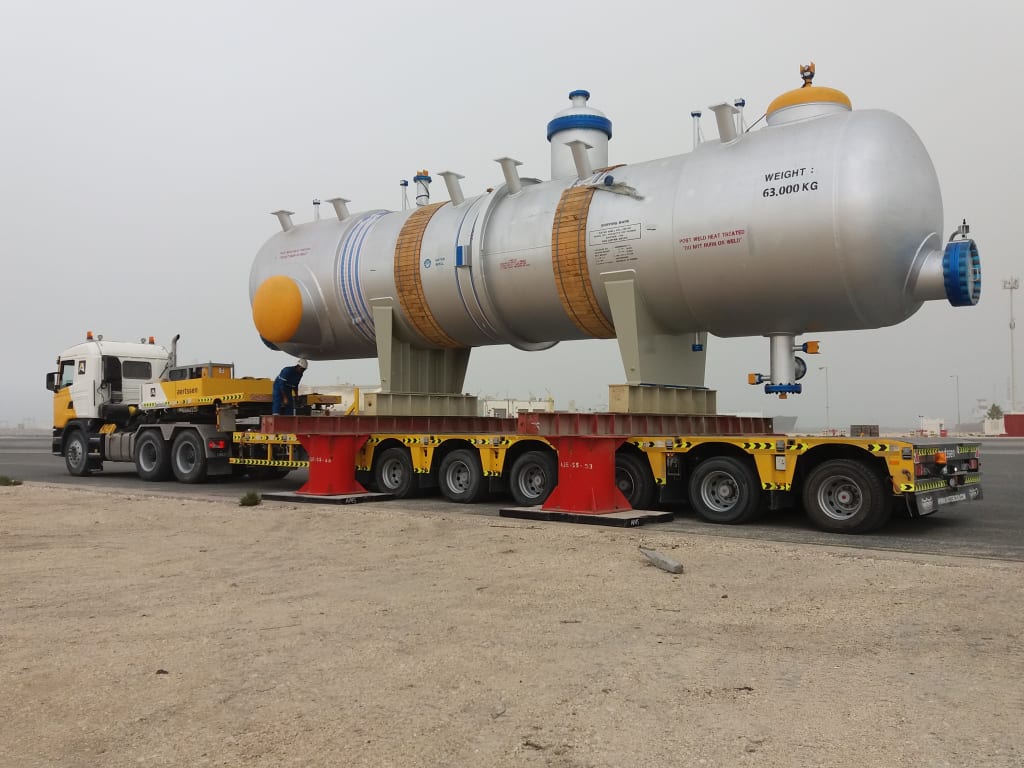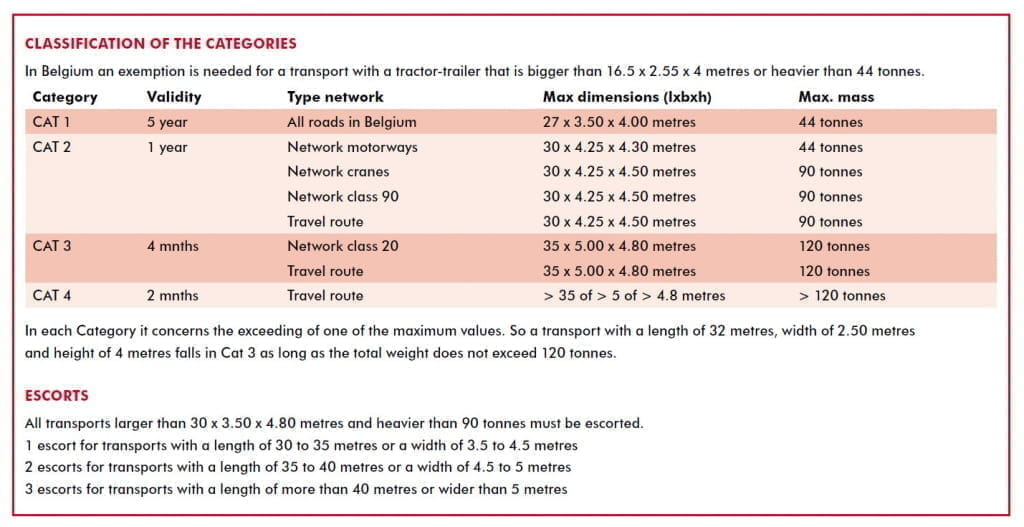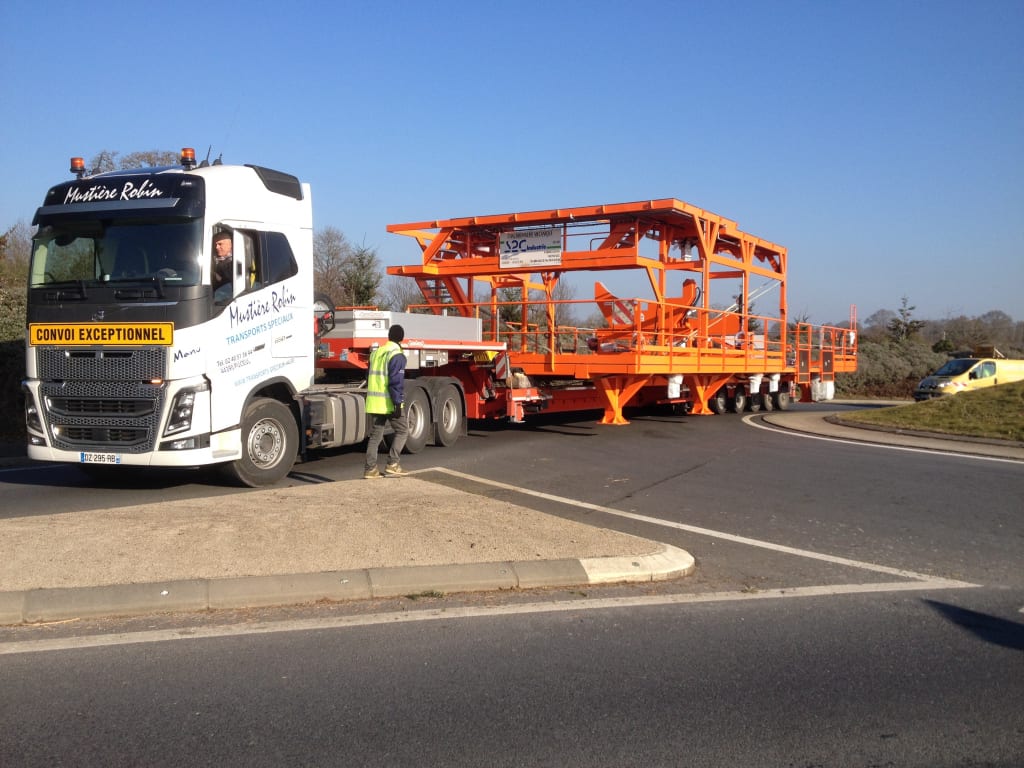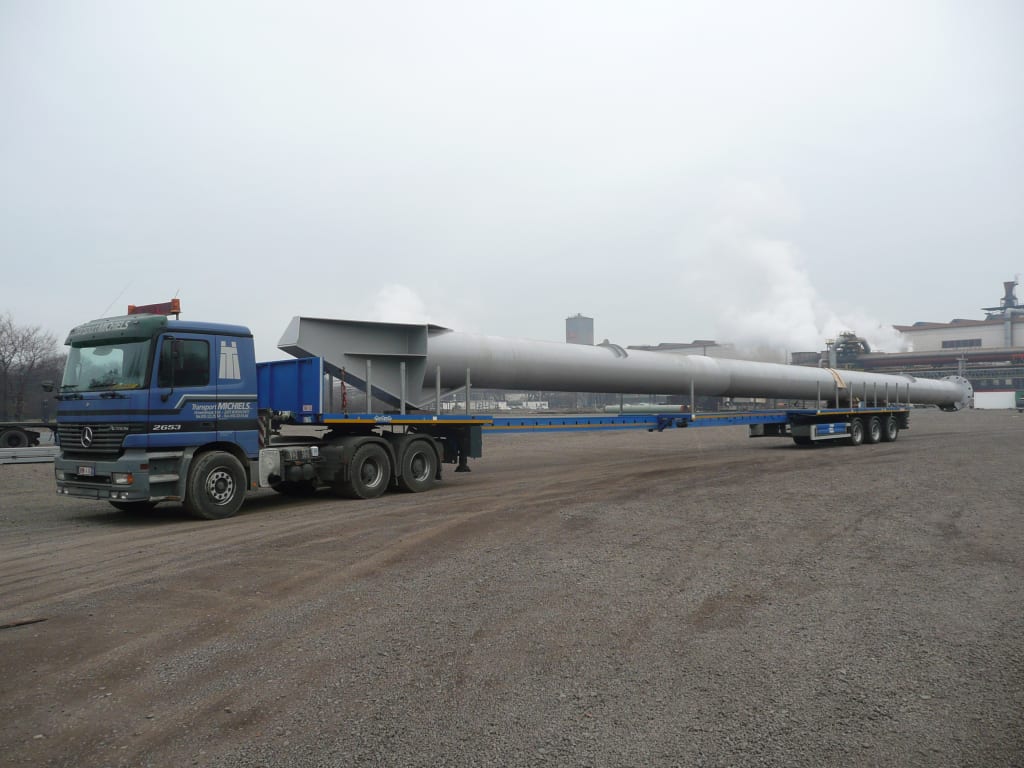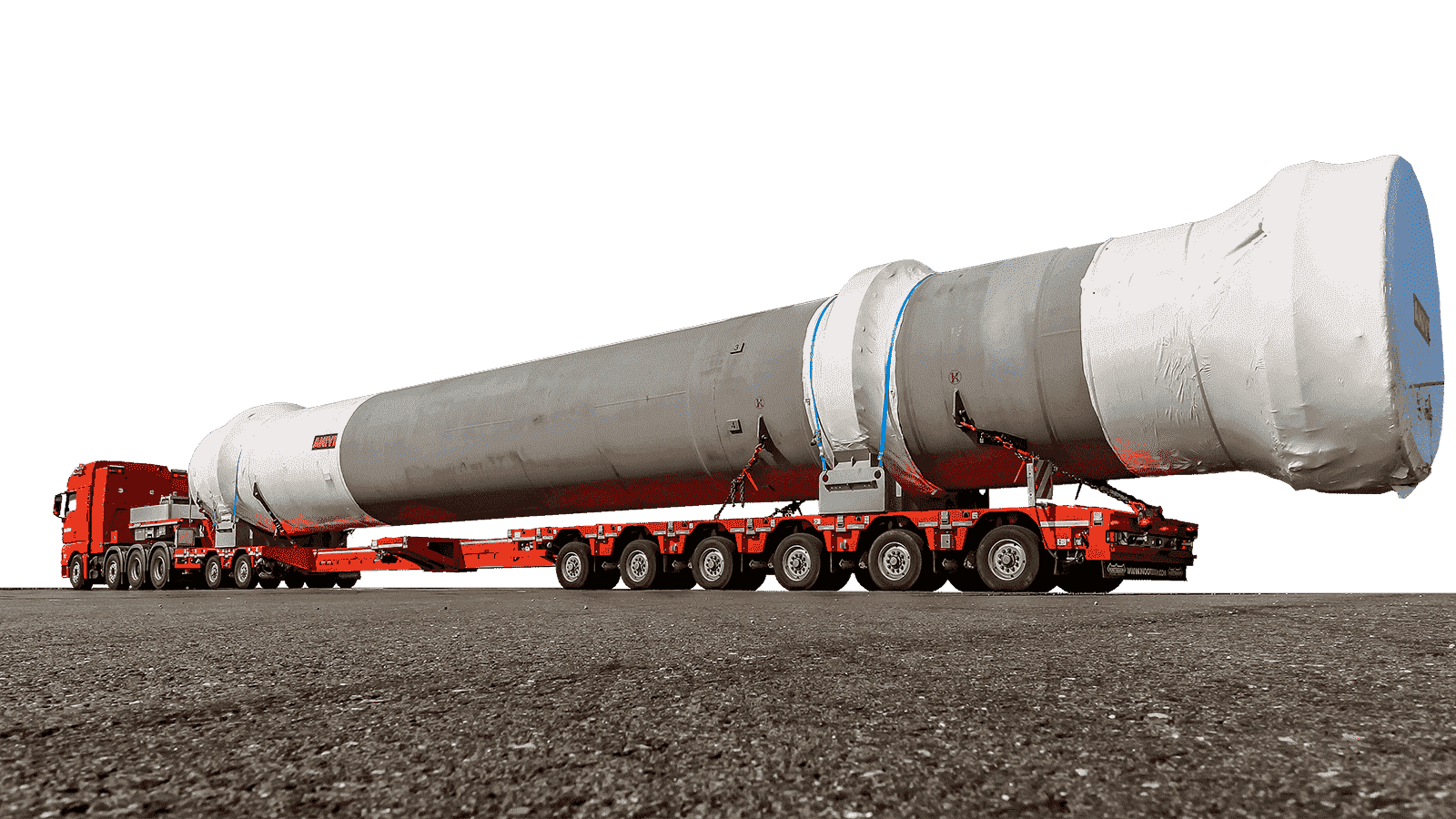Last update: 04-2018
Rules and Regulations in Belgium
 Every European country has its own regulations for abnormal transport. In Belgium three regional agencies are responsible for issuing exemptions. In some respects the system works very well. In other respects – such as the routes along secondary roads – the transport operators as well as the local administrators would like to see different solutions. We list the pros and cons of the regulations concerning abnormal transport in Belgium.
Every European country has its own regulations for abnormal transport. In Belgium three regional agencies are responsible for issuing exemptions. In some respects the system works very well. In other respects – such as the routes along secondary roads – the transport operators as well as the local administrators would like to see different solutions. We list the pros and cons of the regulations concerning abnormal transport in Belgium.
An outline
When the 6th State reform was introduced in 2015 the Abnormal Transport Agency was divided into three regional agencies. Applications for exemption are submitted digitally via WebTeuv and the document issued is valid throughout the Belgian territory. Based on weight and dimensions, transports are divided into Category 1 t/m 4. Exceeding one of the maximum values is conclusive. A combination length of 40 metres will end up in Category 4 – even if it weighs far less than 120 tonnes. The classification in these four categories is clear. The validity of the exemption goes down from 5 years in Cat. 1 to 2 months in Cat. 4. For escorting the system is clear too: from one escorting vehicle for a relatively simple transport to three escorts when the length exceeds 40 metres or the load is wider than 5 metres. Transports wider than four metres or longer than thirty metres are allowed on the road between 21.00 hrs and 06.00 hrs only. There are four road networks for abnormal transports: Network class 90, class 120, Network motorways and Network crane. A map of these roads is available and a 5 km deviation from the route indicated is allowed subject to strict conditions. In some cases a police escort is mandatory. All transports with escorts must be registered digitally beforehand. Finally: the escort must check before the transport starts out whether the permit is in order, inspect the technical condition of the vehicle and he is responsible for the route that is to be followed. This is an outline of the regulations, but in day-to-day practice an abnormal transport has to observe much more detailed regulations.
Interview with Gert Bervoets
Monitoring the compliance with exemptions for abnormal transport is in Belgium carried out, among others, by the Federal traffic police. Within the organisation of the police, regional experts carry out checks. Together they constitute a ‘network of experts’, who share information. The chairman of this network is Gert Bervoets, who from the Federal Traffic Police Limburg, traffic control centre Hasselt, has discussions every day with police officers who have put an abnormal transport at the side of the road. Gert Bervoets knows like no other all the details of the Belgian legislation concerning abnormal transport.
Gert: “Transport companies can apply for an exemption via WebTeuv. For transports that can take the roads of Network class 90 or Network class 120 and can load/unload within a distance of five km from the route, this is relatively simple. The Networks are not nationwide, so for part of the route an incidental permit must be applied for, the ‘travel route’ exemption. Processing this application will take longer if it involves a bridge.”
Gert: “Many of the motorways in Belgium were built in the fifties and sixties. In those days building bridges with a traffic bearing capacity of 30 tonnes was the norm. Goods vehicles up to 44 tonnes are already allowed on the motorways these days, but higher weights are not possible at the moment. On some sections of the motorway they sometimes – by way of exception – permit long transports weighing more than 44 tonnes if the distance between the rearmost axle of the tractor and the foremost axle of the towed vehicle is at least 25 metres. New bridges are built to take a total weight of 120 tonnes and an axle weight of 15 tonnes. This shifts the problem to the access roads, which in most cases are not suitable for heavy weights. All abnormal transports with a mass of more than 44 tonnes now take approved secondary roads. This costs time, extra wear, increased fuel consumption and it is less safe. Moreover, it makes the ports of Antwerp, Ostend and Zeebrugge very difficult to reach. Several German manufacturers have already stopped their exports going via Antwerp. If we have too many controls in Antwerp we will find that the heavy transports prefer to go via the port of Rotterdam. In Belgium the transport companies will have to take the secondary roads for years to come. We want to avoid having to suddenly renovate a great number of bridges – as happened in Germany.”
Gert: “At the moment in Belgium an application for an exemption is not directly linked to the technical details of a vehicle. In theory it would be possible to ask for an exemption on the registration of a delivery van. We would really like to have a system like the one in the Netherlands, where all vehicles – even the ones from abroad – are registered. We still come across transports with eastern European vehicle documentation that we can hardly read.”
Gert: “With an application for an incidental permit via local roads it can happen that after weeks of waiting a transport operator gets a negative reply to his application for exemption. The transport operator still has to pay a fee as part of the costs. We do understand that construction machinery cannot stand idle for four weeks on end. But personally I find it important that we uphold the system because it is meant to prevent distortion of competition.”
Gert: “We regularly notice during checks that a driver has slept in a hotel. That often means a second driver card is used. I don’t approve but I do understand.
The driver of a heavy transport drives during the night in Belgium, during the day in France, during the night in Germany and during the day in the Netherlands. And then in Belgium you also have to deal with the curfews. Another problem is the congested parking lots. It’s not easy to respect the driving times and rest periods all the time. The parking problem causes another problem too: if a heavy transport crosses the border into Belgium, the escort is supposed to check the exemption and the vehicle. Should that take place on the hard shoulder then, if there is no place to park? Definitely not, because we want to prevent unsafe situations but at the moment there is no exception in the regulations that would permit the drive to go and find a safe place to park.”
Gert: “All escorted transports must be registered digitally. In theory this is an excellent system. The exemption is valid for 2 or 4 months. During that period the transport operator is free to choose a day or several days on which the transport take place. Some transports are registered with us more than once. If we want to go and check one of them we are sometimes told the transport is delayed or has been carried out the previous day. We hope to be able to follow the transports via track & trace in a few years from now. That would prevent us from travelling to a location to perform checks and have a wasted journey. At the moment it often like looking for a needle in a haystack. On some days dozens of transports are registered to take place but only a few of them are actually carried out. Upholding the system can only succeed if there is a fair chance of catching the offenders.”
Gert: “Anyone with a valid driving licence can go on the road with an abnormal transport. It used to be quite an honour to be the driver of a large combination. That is changing. The driver has to comply with so many regulations in the various countries that he is bound to do something wrong. But we still come across companies who hardly ever do anything wrong. Other companies – very well-known ones too – used to be caught time and time again, but they have cleaned up their act. There is one category we keep tabs on: the companies that systematically evade the rules. These are companies that factor in the fines. For those companies we apply the rules as rigorously as possible. And in practice that means that a combination may be parked up for few weeks waiting for the correct exemption.”
Gert: “Transports of windmill components from and to the Belgian seaports are increasing all the time. In the past we have stopped a transport with a length of nearly 80 metres, travelling from Denmark to Ostend. In Germany and the Netherlands this transport can without problems travel on the motorways, but in Belgium the route leads along secondary roads if the total mass of the transport exceeds 44 tonnes. We invited the transport operator and a representative of the windmill manufacturer to come and have a chat. We would prefer to see these transports shipped over water, but transporting them over the road is more flexible, cheaper and the load needs to be transferred fewer times so there’s less risk of damage.”
Belgium is in a transitional state. The issuing of exemptions is done via the various regions, but they still have to get used to their new tasks. The rules for escorts have changed but the new regulations will probably not start to function properly until well into 2018. And the road network in Belgium has not kept up with the rapid progress of technology. These days a heavy low-loader that can carry more than 100 tonnes is no exception, but many Belgian roads cannot cope with this kind of weight. In daily practice many transports will make a detour via the Netherlands or Germany.
Gert Bervoets: “The regions understand the problems of the transport operators. Wherever possible the regulations will be improved during the next few years. And we would also like to introduce a registration system for vehicles from abroad, like they have in the Netherlands. Solving the problems with the road network will take much longer. In areas around the seaports many bridges have already been renovated, but further inland there is still a lot of work to be done.” ■







